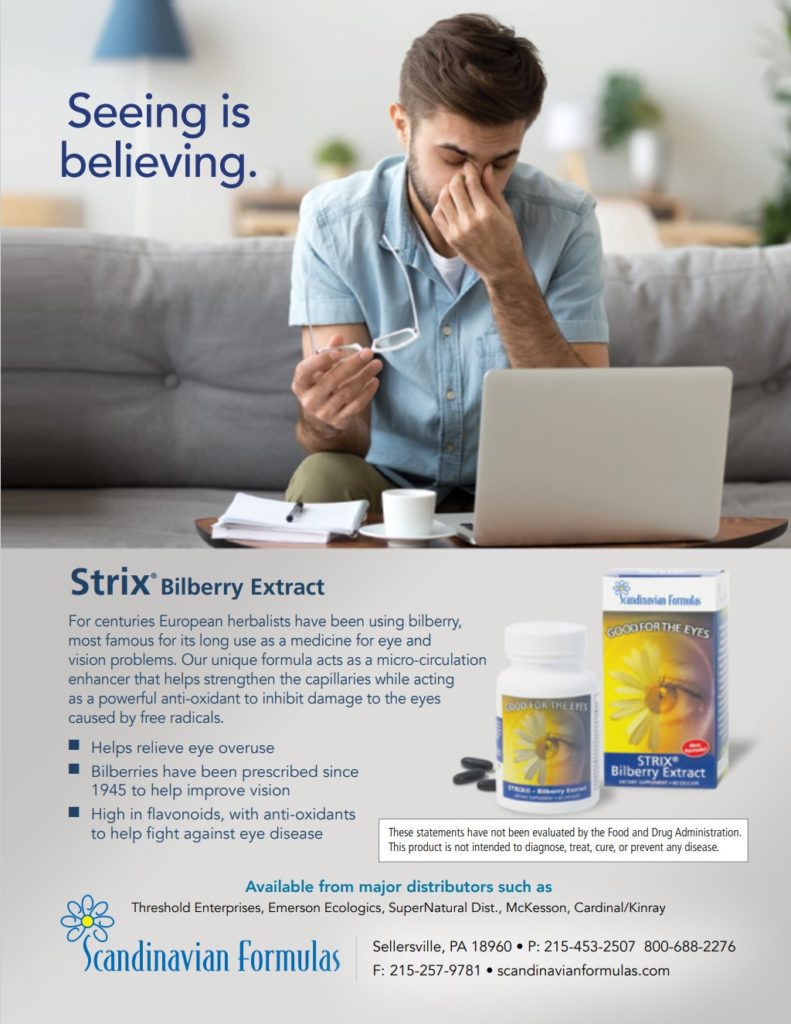Ritchie C. Shoemaker MD
Medical Director, Center for Research on Biotoxin Associated Illnesses
David Lark
Mycologist, MouldLabs, Australia
James C. Ryan, PhD
Chief Science Officer, ProgeneDx
Editor’s Note: Exposure to mold in water-damaged buildings causes a frustrating number of puzzling symptoms and eventually leads to chronic inflammatory response syndrome (CIRS), as explained in the first article of this five-part series, published in the July 2019 issue. In Part 2, the authors explain the importance of maintaining the building envelope in order to prevent health-damaging mold from infesting buildings. This is the first step in prevention…and in healing.
How Does Water Get Inside?
ROOFS: Have you ever put on a new roof or watched someone else do the work? How many thousand nails are required to shingle a 3000 square foot roof (4 nails/shingle in low wind areas; 320 nails per 100 square feet)? If one in a hundred nail heads are exposed, that means 10 exposed/300 square feet. Not much room for error! Remember, it takes fewer than 10 exposed nail heads to create a significant risk for a leak.
How long does it take to get out the binoculars and look for exposed nail heads peeking out from under your shingles reflecting light on a sunny day?
How about flat roofs with special membranes? How long is the shelf life of a man-made material used to prevent gravity from finding a way for water to seep in through a pinhole defect in that membrane? Oops, not 30 years.
And look at the “boots” woven under shingles around the ventilation pipes that take moisture out of bathrooms to exhaust to the outside world? They range in price from $25 to $75. The cheap ones might last 10 years until they leak. Newer boots are rated at 50 years (is that with 20 nights of 40 mph winds per year or just 15?) but cost $75 each. How many builders use the $25 boots? Take a trip to your attic. Look at the attic side of your boots. Are there any moisture stains? Make sure all vent pipes go through the roof deck too.
Look at your ventilating soffits, inside the attic and out (binoculars time again). Is air flowing as expected through the soffit and out the ridge vent? If you have a chimney, can you see daylight between the edge of the roof and the chimney stack? If you see light, there will be water coming down the outside of the chimney inside your home. Time to flash and counter-flash. Or how about the chimney that is off center in a gable end of a house? Water coming down from the higher pitched areas will be directed against the flashing around the chimney. Time for a mini-roof (“cricket”) used to deflect water away from the pocket created by siding touching flashing.
And for cold weather folks, what are those little iron things sticking up and out of the roof near the fascia board? Those snow dogs will help prevent ice dams, but all snow dogs eventually leak. Inspect the dogs and the attic below where ice dams might form.
How about your attic insulation? See anything discolored?
WINDOWS: Windows turn out to be tricky to install. It is not surprising to find moisture from leaking windows in wall cavities below windowsills, especially in new construction. As an aside, new construction ends up being far riskier for hidden construction defects than older construction. The reason might not be obvious. It can take a year or two to recognize construction problems and microbial growth, but water-damaged buildings (WDB) are usually shown to have moisture intrusion over time as one defect or another comes to light.
DOORS: Doors leak from above and below when they aren’t installed right. Inset fan lights over doors must be caulked yearly. What makes your steel door warp and wood door swell?
GUTTERS: Don’t forget to look (or hire someone else to look) at your gutters. Gutters that are high off the ground (second floor and above) require a long ladder to reach; they often are neglected. What a mistake! It doesn’t take too many pine needles or decaying leaves to create a mat that will block flow of rainwater or melting snow from entering the downspout. If an overhanging tree is present, the obstruction problem is essentially guaranteed. As the gutter continues to fill, the water goes somewhere. It will usually overflow the front or the back. If there is a slight backward pitch of the gutter, water will impact against the fascia board. If this wide flat board is not tight, there is free entry for water behind the fascia into the attic or inside of the cladding. Once inside the attic, water can then run downhill, sometimes going a very long way along a rafter. When water meets a drop off point, maybe just a bow of the wood or a protruding nail head, gravity will direct the water downwards. I have seen homes with blocked gutters showing their leaks 40 feet away on the other side of the attic from a blocked gutter. It happens.
SIDING (CLADDING): Any siding materials can leak. Brick, stone, wood, vinyl, concrete, block, and stucco are just barriers. Wind-driven water can track uphill under edges of siding, through nail holes and cracks too. Where one expanse of fake stucco meets another, the seals often are open invitations for water intrusion. If porous oriented strand board (OSB, I call it oriented sponge board) has been used to protect the stud walls underneath the cladding on the inside of the house, the water coming from the leaks of the seals is an invitation to microbial growth that no one will suspect, as OSB is the nurturing sponge of life for microbes. Mold and bacteria, especially, will grow through the four-foot-by-eight-foot wood particle-chip-glue sheet rapidly, leading to microbial growth on both sides of the OSB. As the OSB continues to stay wet and fungi digest cellulose in the OSB, it doesn’t take too long before additional water is dumped into a wall cavity creating the potential for massive problems. As particulates from microbial growth become airborne, even in wall cavities, they can find their way into the inner sanctum, traveling on air flowing around switch plates, receptacles, defective drywall joints, or even nails used to hang pictures. Actinomycetes get through to interior walls more often than fungi, but bacteria are the swiftest to penetrate.
The same problem of moisture penetration applies when people have masonry exterior walls as there is a space (void) behind bricks or stone in which air circulates. Bricks and stone are both porous, which means that moisture that hits the outside of the brick can migrate through to the inner side. At the inner surface it will then drain downward under the influence of gravity. At the bottom on the exterior wall, there should be an opening, called a “weep hole” that will let water leave the inner space and not create microbial disasters between the brick and plywood or OSB.
Vinyl siding goes up quickly, is inexpensive, and comes in many colors. It is no surprise that we have so many vinyl-sided homes in the US. While the vinyl itself is impervious to inflow of outside water, the junctions between pieces of vinyl or areas where the vinyl has been nailed create potential portals for water intrusion. Wind makes gaps in vinyl walls!
The nice green material growing on the outside of exterior walls is not mold but instead is algae. The algal growth can be so profuse such that a mat of algae can form in corners. Under the mat there can be an air space between overlapping pieces of siding that lets water wick underneath.
A word of caution regarding vinyl siding. Attempts to clean siding can create their own sets of problems. Power washing will remove algae (not so quickly!) but use of bleach solutions to clean siding can damage plant life below making it a high price to pay to clean up algae. In siding as in all things, sometimes when we use chemicals that kill living things, we sacrifice the overall good for temporary improvement!
Leaving the outside of the house, the building envelope, we then head downstairs into the basement or the crawlspace. Here is the source of microbial growth that is found in 95% of homes that have these subterranean structures. Having a walkout basement is no guarantee of safety in that the inground side of a walkout basement is subject to additional water pressure that can create a wet wall. Water pressure will overcome any temporary barrier created by tar solutions or fancy paints designed to be waterproof. Don’t believe the manufacturers’ claims!
Many people with a walkout basement will dig trenches on the inground side approximately 3-4 feet deep, installing perforated pipe covered by pebbles to create a “French drain.” At each end of the building, pipes are connected to side pipes, making a right angle at the corners of the home that direct ground water away from the in-ground wall to the side of the home. The pipes extend beyond the downhill side of the house. When patients have done this kind of preventive maintenance work, they are surprised about how much water comes out of the drainpipes. It is an ideal source for making a year-round freshwater pond as part of the garden (and not an aquarium 30’ by 40’ in the basement).
To take care of moisture problems created by subterranean structures, some people will install sump pumps, using a chiseled notch or trench cut into the concrete slab of the floor that leads to the sump pump and then the pump will move the water somewhere, hopefully outside of the basement. This approach sounds pretty good except when we recognize that the water that has just come in and is in a trench creates a microclimate of elevated A(w) that is perfect for bacterial growth. Sump pumps themselves are almost guaranteed to be sources of bacterial colonization and endotoxin. A better solution is not to have a basement!
In our coastal area of Maryland, basements are uncommon, but crawl spaces are common. Usually three-to-four cinder blocks high, crawls are the standard approach to lower cost on new home construction. A finished crawl space will often have several vents installed every 8-12 feet, as if making a portal of entry for hot humified air in summertime into the cool climate of a crawl space was a good idea. When the hot moist air hits the cool air over the exposed soil in the crawl (usually about 54 degrees), it doesn’t quite rain under the house but close to it. The excessive moisture that comes from Mother Earth herself provides a continuous source of moisture to nourish micro-organisms growing in soil. Don’t be confused by the dry appearance of the soil in a crawl space: it just means that soil water has evaporated over time. More is on the way from deeper soils for sure.
A simple approach to crawl spaces is to condition or seal off the crawl space such that the air in the crawl is never exposed to moisture from soil or moisture from the side walls. By putting 20-28-gauge plastic (pond liners are better than swimming pool liners; swimming pool liners are better than thick plastic) and then folding the edges of the liner upwards so that the liner can be attached to the board (sill plate) sitting on top of the foundation, we can create a water intrusion barrier that works. Meanwhile, any water coming from Mother Earth runs into the underside of the piece of plastic and stays with Mother Earth. There is no excessive moisture on the floor side of the liner available to nourish microbes that might be living opportunistically in the crawl space. The vents are sealed shut.
This conditioning idea sounds radical, understanding that many people feel that all crawl spaces should have vents (compare that to the newer approaches where no crawl spaces have vents); their moisture problem continues. Conditioning is defeated when someone hooks up a HVAC vent or a duct that will pump warm or cool air into the crawlspace. Now we are creating the opportunity to share indoor moisture with a sealed crawl space system, thereby defeating the purpose of making a moisture-tight sealed air chamber.
As always, if there is a basement or a crawl space, it makes sense to seal (using expandable foam) any holes that are made in the subfloor to permit passage of pipes, electrical wires, central vacs and the like. It is amazing how much air can come through 3/8” circle around each pipe penetration through the subfloor! Such spray foams will release VOCs, so seal well before occupying the building.
INTERNAL SOURCES of moisture are often overlooked. Outside humidity, transferred to the inside when an outside door is opened is a definite problem in tropical areas. Two choices exist to prevent exposure. The first involves matching tonnage of HVAC (heating, ventilation, air conditioning) equipment to size of a building that will permit drying out of indoor air. The second approach is to increase ventilation (windows wide open, for starters). In the US, buildings often use HVAC to safeguard homes from tropical fungi (especially A. penicillioides).
COOKING creates the biggest source of moisture in the first floor of most homes, with bathrooms creating the source of moisture most commonly in the second floor. This is assuming of course that there are no sliding glass doors that leak, no sky lights that leak, no elaborate roof structures with valleys and pitches that are impossible to close off and no flat roofs that will leak regardless of what is done.
HUMAN SOURCES of moisture (think of breathing!) also contribute to the availability of water inside the home. Leaking shower pipes are notorious for having small pin hole leaks just above the sweat joint where a copper supply tube meets a plastic or PVC junction. These pin hole leaks rarely are visible in the bathroom side of a wall cavity but if there is a closet that abuts the back of the wall cavity, that is where you will see moisture and mold growth. If the closet is closed most of the time, expect to find A. penicillioides, an organism that does its damage by the company it keeps as opposed to being a horrible toxin former. A. penicillioides does not like to be ventilated. You will find it in vanities, behind refrigerators, at the end of hallways that are not ventilated or in closets. When you see shoes in a closet growing mold, be thinking about reduced ventilation. A. penicillioides is also found on carpets, soft furnishings, and drapes.
DECKS: Adding decks makes for enjoyable living, but if the deck ribbon board is screwed into the foundation board of the home, make sure that there is adequate flashing to protect the home from water coming from the deck itself through the deck understructure.
STILTS: A special circumstance applies to coastal living. There is a financial benefit to building homes on elevated pilings, usually 8-10 feet off the sand, in order to avoid flood damage. For some people, this 10-foot high space the size of the footprint of the building, is too tempting. Just look at this ground floor bonus room! Up go the walls and up go the fungal counts coming from the damp coastal soil. What we now have is an outdoor fungal growth chamber sitting outside of the entry door so that every time you go in or out there becomes a vortex of sick air entering the living space. Not a good idea; don’t make extra storage space or living space and sacrifice your health. Ventilate it!

Ritchie C. Shoemaker, MD, remains active in the field of biotoxin-associated illnesses, the focus of his practice since 1997. At that time, an outbreak of unexplained human illness, associated with exposure to blooms of a dinoflagellate, Pfiesteria piscicida, attracted his attention and interest. Pfiesteria was the first example of an acute and then chronic biotoxin-associated illness recognized and published in peer reviewed literature. Shoemaker’s two papers on diagnosis and then treatment were the first in the world’s literature on acquisition of illness from Pfiesteria in the wild. Since that time, other sources of biotoxin associated illnesses have come forward including other dinoflagellates, cyanobacteria and, most importantly, organisms resident in water damaged buildings. Shoemaker has spent the last 22 years treating patients and conducting research that unveils the extraordinary complexity of these illnesses, now called chronic inflammatory response syndromes (CIRS). Starting with no biomarkers and now progressing to over 25, CIRS has been shown to have abnormalities in proteomics and transcriptomics with differential gene activation, the final ultimate pathway of disease production in the world of chronic fatigue.
His collaboration with Dr. James C Ryan, transcriptomist, has led to multiple publications that have application, not just to chronic fatiguing illnesses but to the inflammatory illnesses of the 21st century including atherosclerosis, diabetes, obesity, and autoimmune illness.
As Shoemaker’s work has progressed on the complex problems of grey matter nuclear atrophy, a small but growing cohort of patients with multinuclear atrophy and cognitive impairment have led to improvements that may have application to illnesses such as Alzheimer’s disease.














